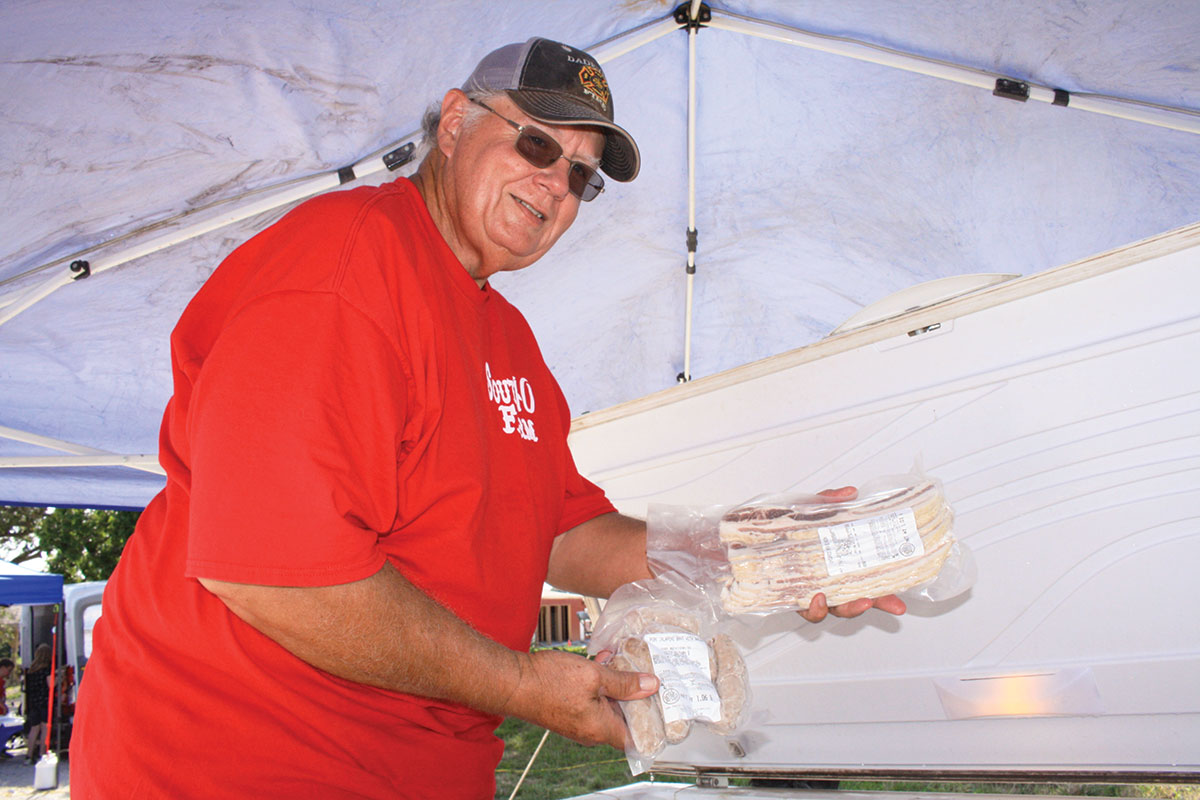
With corn at $5.50 a bushel, probably not too many people are throwing it into a furnace.
Lawrence County poultry producer Roger Schnake is one of the exceptions.
It's all part of an alternative fuel experiment Schnake instituted two years ago to heat eight poultry houses on his farm near Stotts City, Mo. Schnake has been growing broilers for Tyson since 1992 and during that 16 years has watched steadily increasing propane prices burn into his profits.
As he watched fuel costs more than triple, and with an operation that used 60,000 gallons of propane a year, Schnake began evaluating his options. He prepared a feasibility study that included the costs of new equipment, labor, electricity and maintenance, as well as comparing the costs of using grain, wood and coal as fuel.
The results of the study led him to install coal-burning furnaces, which he used for two years. The first year, propane use was reduced by 70 percent.
"Of all the products I've used, coal is the most efficient and cost effective," Schnake said. "And the nastiest."
While coal remains the cheapest fuel per BTU, its disadvantages include the smoke and dust it generates, Schnake said.
Last year, he also took advantage of trees and limbs felled by the area's massive ice storm. However, wood has proven to be too labor intensive unless reduced to a form, such as pellets, which can be added to the furnaces through an automated system, Schnake said.
Last summer, Schnake installed biomass burners in the chicken houses and grew 40 acres of corn for fuel- probably not the most cost-efficient choice, but a decision he stood by for the sake of the experiment.
"With corn prices the way they are right now, it would be more feasible to sell the corn and buy wood pellets," Schnake said.
That is the talk fellow Tyson producer Bill Harvill is talking at his eight-house farm in Newton County, where he also is experimenting with biomass fuels. Harvill trades poultry litter for corn from producers in Barton County, and for a while burned the grain to heat his poultry houses.
“But right now, corn is high, so I sell it and buy the cheaper wood pellets,” Bill said. “We’ve been pretty successful with it.”
Both wood and corn pellets are clean burning and produce about the same BTU energy level, Schnake and Harvill agreed.
Both men said that one of the most exciting facets of converting biomass to energy is that the fuel can be made of almost anything – corn stover, unusable hay, trees, paper, recycled plastic, even paper money that has been removed from circulation, shredded and made into pellets.
"It just depends on how creative you want to be," Schnake said.
Schnake’s experiment this winter included burning some eight-year-old barley he had on the farm, as well as pellets made from seed cleaning residue. Some propane use was still necessary, but less than 20 or 25 percent of what he was using two years ago, Schnake said.
Harvill is one of a few producers who are even experimenting with pellets made from the litter produced by the chickens themselves. However, Harvill believes fuel is not the best use for litter. Pellets made only of litter do not have a high BTU rating, although blends of litter and other biomass, such as wood, can improve the energy output, and experiments with litter pellets will continue. However, litter may be most valuable as a soil amendment.
“The bigger picture with litter is that the higher oil goes, the higher fertilizer goes,” Harvill said. “Since litter is high in nutrients, it is worth more as fertilizer than fuel.”
Schnake agreed.
"The best place for the litter is to put it on the ground to grow more biomass," he said.
Schnake’s ultimate goal is to produce the bulk of the fuel he needs right on the farm – whether it be wood, corn, litter or other element – and to have a processor that creates the pellet form that is most efficient for his operation.
"When you're growing your own fuel, it's tremendous what it saves," Schnake said.
Schnake also has noted other advantages to using alternative fuels, including an almost total change of environment in the poultry houses, which see about 6.5 flocks or 1.2 million birds a year.
When propane is burned, Schnake said, a certain amount of water vapor is emitted into air. With biomass, all water is contained within the furnace, resulting in drier air and floors in the houses. The air quality is better, so there is less need to draw in fresh – but cold – air from the outside. The houses stay warmer, reducing fuel needs.
"We think it has even changed the nutrient levels in the litter," Schnake said. "The litter stays drier, so more nitrogen stays in the litter rather than escaping into the air.
A byproduct from Schnake's corn fuel has the potential of making his latest experiment even more exciting. After the recent annual down-to-the-bones cleaning of the poultry houses, Schnake covered the floors with stover from his fields in place of the more traditional sawdust. If the stover proves to be suitable, it will cover the cost of the corn crop he used for this year's fuel.
"Which means the cost will be zero," Schnake said.
"It would be really hard to go back (to propane use)," he said.
"If there is any disadvantage (to alternative fuel use), it is that nothing is as convenient as walking over and turning the thermostat up," Schnake said.
“We’re moving into a new age,” Harvill said. “Biomass is the thing of the future.”







